Notes: Mollington Station was one of the original stations of the Chester & Birkenhead Railway (C&BR). The C&BR was authorised to build a 15-mile single-track line between Grange Lane in Birkenhead and Brook Street in Chester on 12 July 1837. Construction of the line had begun by the end of the year and an inspection train was run on 10 September 1840. An opening ceremony was held on 22 September 1840 during which a train for dignitaries was run from Birkenhead Grange Lane to Chester and back. Full public services began on 23 September 1840.
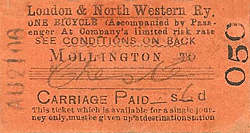 Originally Mollington was provided with only one platform on the west side of the line. The station had a brick built two storey building that provided facilities for passengers and accommodation for the station master. A sloping path linked the platform directly to the road overbridge which crossed the line to the north of the station. An approach road also led to the station entrance for vehicular traffic. Trains serving the station would have originally run between Birkenhead and Chester with some through coaches going forward towards Crewe via the Grand Junction railway (GJR). By 1842 there were five trains in each direction Monday-to-Saturday and on Sundays there were two services each way. Originally Mollington was provided with only one platform on the west side of the line. The station had a brick built two storey building that provided facilities for passengers and accommodation for the station master. A sloping path linked the platform directly to the road overbridge which crossed the line to the north of the station. An approach road also led to the station entrance for vehicular traffic. Trains serving the station would have originally run between Birkenhead and Chester with some through coaches going forward towards Crewe via the Grand Junction railway (GJR). By 1842 there were five trains in each direction Monday-to-Saturday and on Sundays there were two services each way.
On 23 October 1844 an extension was opened at the Birkenhead end of the line to Monks Ferry.
On 22 July 1847 the line became part of the Birkenhead, Lancashire and Cheshire Junction Railway (BL&CJR) and shortly afterwards the new company doubled the track between Birkenhead and Chester. Mollington gained a second platform which became up (Chester direction) with the original becoming the down (Birkenhead direction). By 18 December 1850 the BL&CJR had created a route from Chester to Warrington. At Chester lines had been opened to Holyhead by the Chester & Holyhead Railway (C&HR) on 5 March 1850 and to Shrewsbury by the Shrewsbury & Chester Railway (S&CR) on 16 October 1848 affording more journey opportunities from Birkenhead.
The March 1850 timetable showed Mollington as having eight up and seven down trains Monday-to-Saturday. On Sundays there were 3 up and 4 down services.
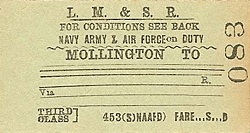 On 1 August 1859 the BL&CR became the Birkenhead Railway (BR). The following year it was taken over by the Great Western Railway (GWR) and the London & North Western Railway as a joint line. The two companies set up the Birkenhead Joint Committee to run the line and the services. The LNWR had by that time become the owner of the C&HR and the GWR had taken control of the S&CR giving both companies routes between Birkenhead and the Midlands (with onward connections to London). On 1 August 1859 the BL&CR became the Birkenhead Railway (BR). The following year it was taken over by the Great Western Railway (GWR) and the London & North Western Railway as a joint line. The two companies set up the Birkenhead Joint Committee to run the line and the services. The LNWR had by that time become the owner of the C&HR and the GWR had taken control of the S&CR giving both companies routes between Birkenhead and the Midlands (with onward connections to London).
On 31 March 1878 a new terminus was opened at Birkenhead Woodside and from that date all the down passenger services ran to that destination.
The December 1895 timetable showed 16 up and 12 down trains Monday-to-Saturday. there were 5 up and 6 down trains on Sundays. All of the trains were local in nature mostly running between Birkenhead and Chester. Some of the Birkenhead direction trains were semi-fast services that skipped a number of stations. Longer trains could be accommodated by the stations lengthy platforms which continued beyond the road overbridge. As well as the trains that called at the station there were many that passed through including the GWR’s Birkenhead Woodside to London Paddington service and the LNWR through trains to and from London Euston. The line was also very busy with a wide variety of goods services running to and from the Birkenhead Docks.
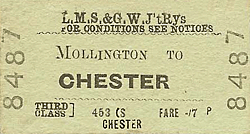 By the 1890s there was a signal box located to the south of the station on the east side of the line. One of the interesting features of the box was that gaps were made in the road overbridge to the north of the station so that the signalmen could see a signal that were located beyond it. By the 1890s there was a signal box located to the south of the station on the east side of the line. One of the interesting features of the box was that gaps were made in the road overbridge to the north of the station so that the signalmen could see a signal that were located beyond it.
The July 1922 timetable showed fifteen up and eleven down trains Monday-to-Saturday some of which ran to or from the Warrington line. They were still local services and there were five up and six down on Sundays.
At the grouping in 1923 the line became a GWR and London Midland & Scottish Railway (LMS) joint line after the LNWR became part of the latter.
In 1938 a siding was opened at Mollington that was used for the loading of oil products. Storage tanks were located close to the siding which was used extensively during the Second World War.
On 1 January 1948 Mollington became part of British Railways [London Midland Region] (BR[LMR]).
As Mollington Station was in a fairly remote location it suffered from a decline in passenger numbers during the second half of the 20th century. It closed to passengers on 7 March 1960 but remained open for goods traffic until 4 January 1965 although it was downgraded to an unstaffed public siding on closure to passengers. After 1965 the oil siding remained in use for a short time.
The line lost its mainline services in March 1963 and on 5 November 1967 Birkenhead Woodside was closed completely. An hourly DMU service in each direction and freight services were all that remained during the 1970s and early 1980s. In 1993 the line through Mollington station was electrified as part of an extension of the Merseyrail Wirral Line from Hooton (which had seen electric services from 30 September 1985) to Chester on 3 September 1993.
There was a suggestion that the station should be reopened with car parking for 20 - 30 cars in the 2008 Mollington Parish Plan but no progress had been made by 2014.
Tickets from Michael Stewart
To see other closed stations on the Birkenhead Woodside to Chester line click on the station name: Birkenhead Woodside, Birkenhead Monks Ferry, Birkenhead Grange lane, Birkenhead Town, Tranmere, Rock Lane, Ledsham,
& Upton-by-Chester |

old2.jpg)
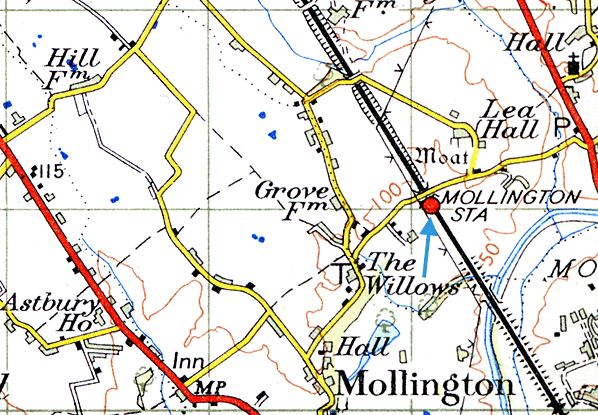
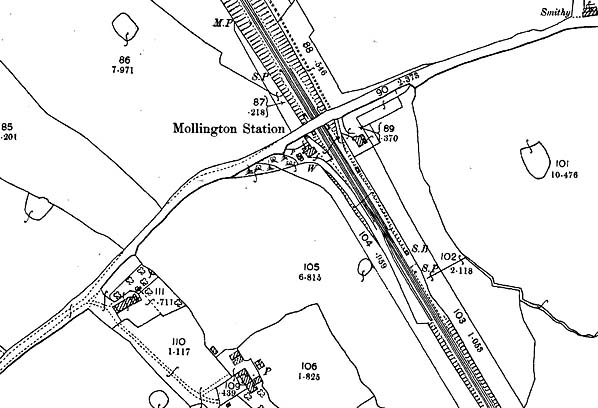
old1.jpg)
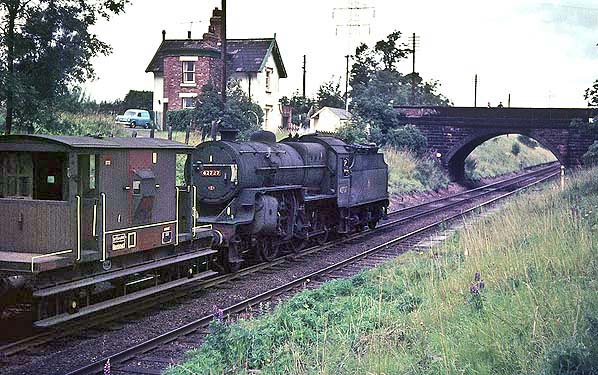
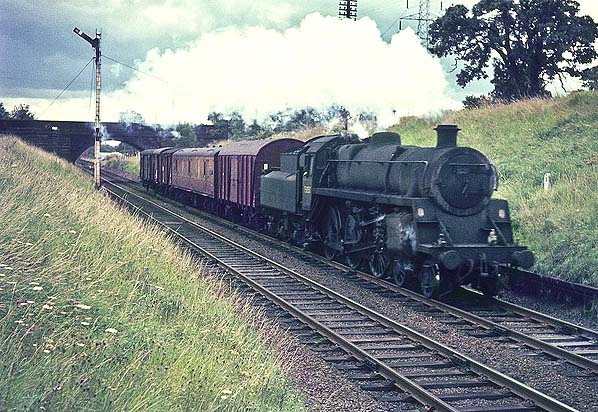
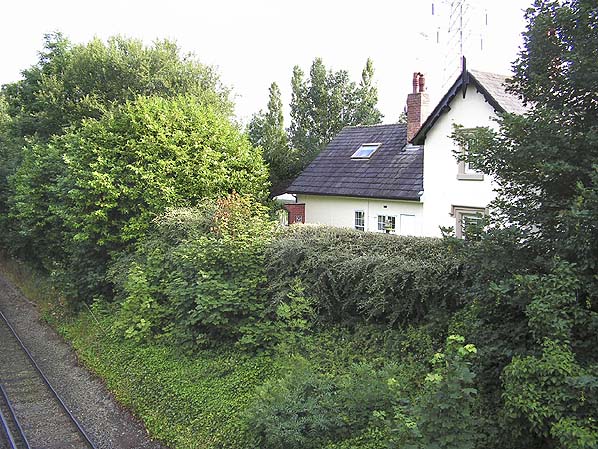
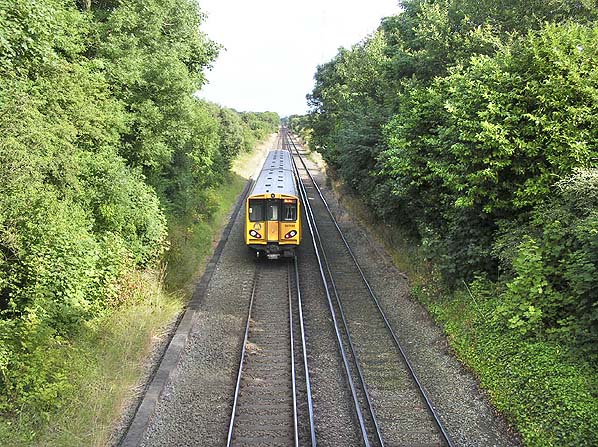
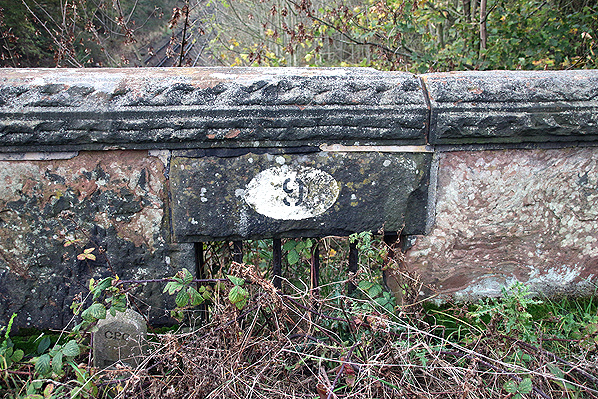
 Originally Mollington was provided with only one platform on the west side of the line. The station had a brick built two storey building that provided facilities for passengers and accommodation for the station master. A sloping path linked the platform directly to the road overbridge which crossed the line to the north of the station. An approach road also led to the station entrance for vehicular traffic. Trains serving the station would have originally run between Birkenhead and Chester with some through coaches going forward towards Crewe via the Grand Junction railway (GJR). By 1842 there were five trains in each direction Monday-to-Saturday and on Sundays there were two services each way.
Originally Mollington was provided with only one platform on the west side of the line. The station had a brick built two storey building that provided facilities for passengers and accommodation for the station master. A sloping path linked the platform directly to the road overbridge which crossed the line to the north of the station. An approach road also led to the station entrance for vehicular traffic. Trains serving the station would have originally run between Birkenhead and Chester with some through coaches going forward towards Crewe via the Grand Junction railway (GJR). By 1842 there were five trains in each direction Monday-to-Saturday and on Sundays there were two services each way.
 On 1 August 1859 the BL&CR became the Birkenhead Railway (BR). The following year it was taken over by the Great Western Railway (GWR) and the London & North Western Railway as a joint line. The two companies set up the Birkenhead Joint Committee to run the line and the services. The LNWR had by that time become the owner of the C&HR and the GWR had taken control of the S&CR giving both companies routes between Birkenhead and the Midlands (with onward connections to London).
On 1 August 1859 the BL&CR became the Birkenhead Railway (BR). The following year it was taken over by the Great Western Railway (GWR) and the London & North Western Railway as a joint line. The two companies set up the Birkenhead Joint Committee to run the line and the services. The LNWR had by that time become the owner of the C&HR and the GWR had taken control of the S&CR giving both companies routes between Birkenhead and the Midlands (with onward connections to London).  By the 1890s there was a signal box located to the south of the station on the east side of the line. One of the interesting features of the box was that gaps were made in the road overbridge to the north of the station so that the signalmen could see a signal that were located beyond it.
By the 1890s there was a signal box located to the south of the station on the east side of the line. One of the interesting features of the box was that gaps were made in the road overbridge to the north of the station so that the signalmen could see a signal that were located beyond it. 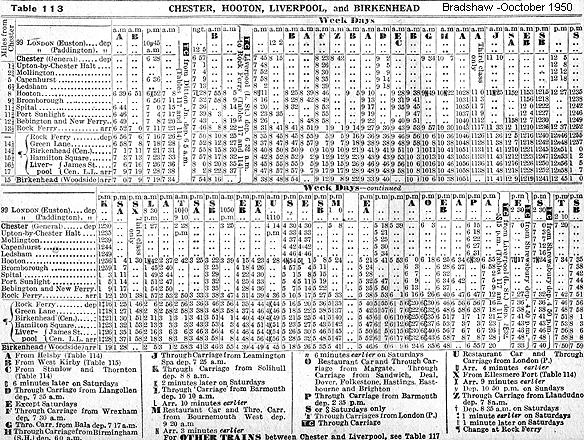
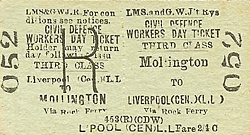
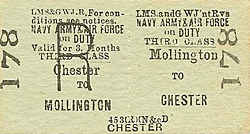





 Home Page
Home Page